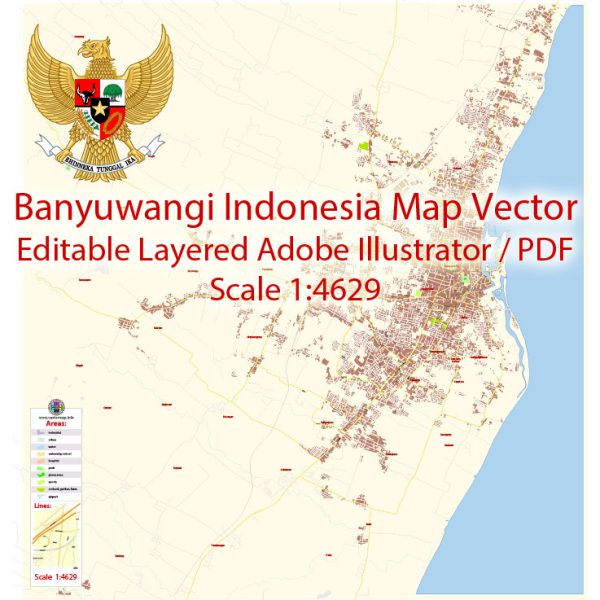Banyuwangi is a regency and town located in the easternmost part of Java, Indonesia. The area has a rich history of urban development that spans many centuries. Here’s a brief description of the history of urban development in Banyuwangi:
- Early History: Banyuwangi’s history can be traced back to ancient times, with evidence of human habitation dating back to the prehistoric period. The region was initially inhabited by various indigenous groups, and it played a role as a trading hub for spices, exotic woods, and other goods, connecting the Indonesian archipelago with traders from India and China.
- Hindu-Buddhist Era: Like many other parts of Indonesia, Banyuwangi experienced the influence of Hinduism and Buddhism during the period of Indianization, which began around the 4th to 7th centuries CE. Temples, sculptures, and inscriptions from this era have been discovered in the region, providing evidence of early urbanization and cultural development.
- Islamic Influence: As Islam spread across the Indonesian archipelago in the 13th century, it also left its mark on Banyuwangi. The arrival of Islam influenced not only religious practices but also architecture and urban planning.
- Dutch Colonial Period: Banyuwangi came under Dutch colonial rule in the 18th century, and it was an important administrative and trading center for the Dutch East Indies. During this time, the Dutch influenced urban development through the construction of government buildings, transportation infrastructure, and other colonial-era structures.
- Modern Development: In the post-independence era, Banyuwangi has continued to develop as a center for trade, agriculture, and tourism. The town has expanded with the establishment of modern infrastructure, including roads, schools, healthcare facilities, and other amenities.
- Cultural Heritage: Banyuwangi is known for its rich cultural heritage, which includes traditional Javanese art, dance, and music. The town has also preserved its indigenous culture, including the Osing people, who have unique customs and traditions.
- Tourism: In recent years, Banyuwangi has gained recognition as a tourist destination. The regency is home to several natural attractions, including the Ijen Crater, which features a stunning blue sulfur lake, and beautiful beaches. The local government has invested in tourism infrastructure, including the development of resorts, accommodations, and other facilities to cater to visitors.
Banyuwangi’s history of urban development is a blend of indigenous, Hindu-Buddhist, Islamic, and Dutch colonial influences. Today, it continues to evolve as a vibrant and culturally diverse town, with a growing emphasis on sustainable tourism and economic development.


 Author: Kirill Shrayber, Ph.D.
Author: Kirill Shrayber, Ph.D.